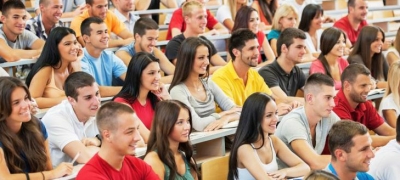ΓΛΩΣΣΟΛΟΓΙΑ-ΔΙΔΑΚΤΙΚΗ
‘The Show Must Go Online’: Arts Teachers Adapt to At-Home Instruction
From laundry art to 'name that tune,' arts enrichment teachers are finding creative ways to transition to remote teaching.
When art teacher Janis Henderson-Hunsucker learned that her school in Danbury, North Carolina, would close because of the coronavirus, she quickly crafted a survey to find out what art supplies her students had at home. It turned out, not many.
Anxious to keep the learning going, she mailed boxes of basic art supplies like markers, crayons, coloured pencils, glue, and scissors to her students, many of whom live in the hills and hollers of Appalachia where internet access is limited. She included the foreshortening drawings that students had started in a class with instructions on how to finish them.
At Playtime, Open Fields and Trees Beat Seesaws and Monkey Bars
New research suggests that natural elements like mud, sticks, and trees might unlock the imaginative power of play—beating out purpose-built spaces like the neighbourhood playground.
In the 1990s, a small team of researchers compiled and published an unusual list. It was an elaborate taxonomy of the imaginary friends of hundreds of three- and four-year-olds, with accompanying descriptions. Among the fantastical beings—filed into Linnaean categories like ‘Magical Child’ and ‘Ghost, Angel Presence’—were invisible, plaid-coloured fleas hunted by space aliens, a chatty green cyclops with a penchant for world travel, and a mercurial creature named Baintor who lived hidden in the lamplight.
That’s all perfectly strange, and perfectly natural.
Why Are Some Kids Thriving During Remote Learning?
Though remote learning has brought many challenges, some students seem to be thriving in the new circumstances. What can we learn from them?
All school year, Monique Woodard’s seventh period, her last class of the day, has been her hardest. “I feel like I don't know what to do with them,” she said of her middle school science class when Edutopia first talked to her back in the fall. One boy in particular, the “class clown,” was a persistent challenge, and his behaviour influenced his 23 peers, 15 of whom are boys.
5 Ways to Support Struggling Students in World Language Classes
Students with academic challenges benefit from these simple strategies as they develop confidence using the target language.
It is unsurprising that students who face academic challenges may feel overwhelmed in world language classrooms, which require all learners to leave their comfort zones and embrace something new. Those who grapple with processing issues or memory weaknesses require additional assistance in order to successfully acquire a new language. However, this additional assistance should not mean resorting to English—it is possible to maintain the target language while meeting all students’ needs.
7 Ways to Make Teaching a More Sustainable Profession
Tips for school leaders seeking to foster an environment that supports, engages, and motivates teachers.
Years ago, a new teacher I was mentoring up and left the profession after two years. She was brilliant, enthusiastic, and well-loved by colleagues, students, and families, and she inspired me to write the book Why Great Teachers Quit and How We Might Stop the Exodus.
With each day that I work with teachers, I am more convinced that it is vital to the future of public education that we make teaching a more sustainable, humane profession.

















